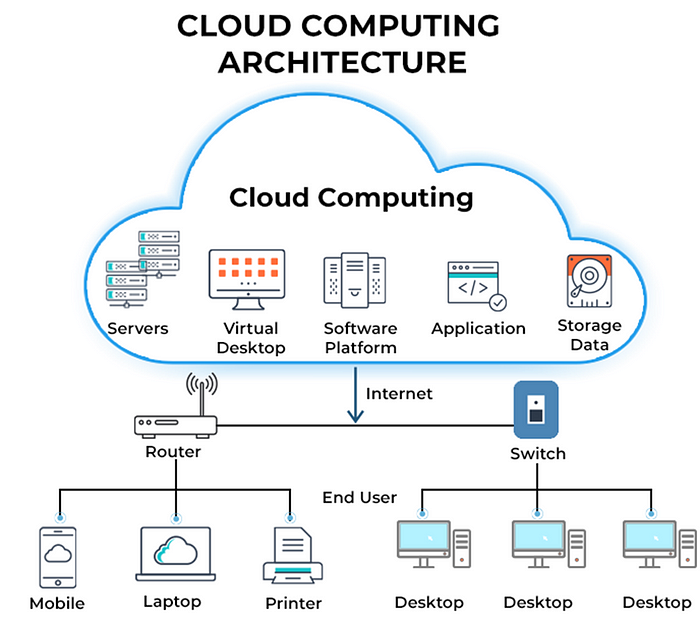When the history of science is examined, it is seen that the need for scientific studies has increased over the ages as a result of societies’ desire for innovation and their desire to find different things.[1] Societies that have internalized scientific thinking and accepted it as a way of life; They have made significant progress in production, trade, quality of services and raising the welfare level of people. In the process of scientific development, each new knowledge has led to a rapid increase in the knowledge production process as a means of producing new knowledge.[2]
Information means information that changes something or a person. It does this either by establishing an effective reason for action or by placing a person (or organization) in a position to take a different and/or more effective action.[3]
The development of technology dates back to ancient times, even to the making of the first simple tools. After the Middle Ages, especially with the “Industrial Revolution”, the period of modern technology began.[4] On the one hand, while technological developments accelerated, on the other hand, geographical borders expanded, political formations changed by following a direction parallel to technological developments.[5]
Technology, which is defined as the application of knowledge and knowledge-based methods to any work, can be said to be a technological development if the knowledge and knowledge-based method applied to a work allows that work to be done in a shorter time.[6] Technological development mostly takes place through new machine designs, the use of new tools, new processes and methods, and new product design. In general, every investment to increase production or the capacity of the work done means the application of new technology.[7]
We live in an ever-evolving world, all companies need to divert their activities towards new forms of technology, so Digital Transformation becomes a survival tool.[8]
In the digitalizing world, while companies move their services to virtual environments, remote operations, commercial transactions and security operations need new services that can be accessed quickly and from anywhere.[9] Cloud computing has a key role in this revolution.[10]
[1] Burke J, Bergman J, Asimov I. The Impact of Science on Society / James Burke, Jules Bergman, Isaac Asimov. Scientific and Technical Information Branch, National Aeronautics and Space Administration; 1985.; also reached at https://history.nasa.gov/sp482.pdf on 24.12.2022
[2] Bindé, J. (Coord.) (2005). Towards knowledge societies: UNESCO world report. UNESCO reference works series. Paris: UNESCO. Retrieved March 09, 2006 from http://unesdoc.unesco.org/images/0014/001418/141843e.pdf
[3] https://www.techtarget.com/searchcio/definition/change-management visited on 23.12.2022
[4] https://www.britannica.com/technology/history-of-technology visited on 18.12.2022
[5] Piazza Roberto, “Globalization Helps Spread Knowledge and Technology Across Borders”, April 9, 2018; also avaliable at https://www.imf.org/en/Blogs/Articles/2018/04/09/globalization-helps-spread-knowledge-and-technology-across-borders on 23.12.2022
[6] Dennis R. Herschbach, “Knowledge as Technology: Implications for Instruction,” Journal of Technology Education, 7/1 (1995): 31.; also avaliable at https://files.eric.ed.gov/fulltext/EJ513065.pdf on 21.12.2022
[7] Leonard-Barton, D, & Kraus, W A., Implementing new technology. United States. From the Magazine (November 1985) ; also avaliable at https://hbr.org/1985/11/implementing-new-technology on 21.12.2022
[8] Economic Commission for Latin America and the Caribbean (ECLAC), Digital technologies for a new future (LC/TS.2021/43), Santiago, 2021., p.12; also avaliable at https://www.cepal.org/sites/default/files/publication/files/46817/S2000960_en.pdf on 20.12.2022
[9] The Benefits of Digital Transformation, avaliable at https://cpl.thalesgroup.com/software-monetization/benefits-of-digital-transformation
[10] Attaran, Mohsen & Woods, Jeremy. (2018). Cloud computing technology: improving small business performance using the Internet. Journal of Small Business & Entrepreneurship. 13. 94–106. 10.1080/08276331.2018.1466850.; also avaliable at https://www.researchgate.net/publication/325637399_Cloud_computing_technology_improving_small_business_performance_using_the_Internet on 21.12.2022
Cloud Computing And Its Importance
Cloud computing refers to the process of Maintenance, Storage, Management, Processing, Analytics and Security of data by leveraging a network of Internet-based servers.[1] Data is not saved on physical devices, but in the cloud, this helps businesses better manage management, streamline processes, increase productivity, optimize costs, and enhance customers’ digital experience.[2]
In cloud computing, files can be saved to a remote database with cloud-based storage rather than being kept on a dedicated hard drive or local storage device. In this way, as long as any electronic device has access to the internet, it is possible to access the data and the software programs that will run it.
[1] EuroNovate group, Privacy Policy Avaliable at https://www.euronovategroup.com/privacy-policy/ on 22.12.2022
[2] IBM, What is cloud computing?, ibm.com Avaliable on website https://www.ibm.com/topics/cloud-computing on 21.12.2022
Ascompanies move faster in their digital transformation journeys, they are looking for ways to increase agility, business continuity, profitability and scalability, and cloud computing technology plays an increasing role at the center of every strategy to achieve their goals.[1]
Cloud computing, which is the use of remote servers over a network, can provide functions and services such as storage, processing, security, analytics etc.[2] For digital destruction to happen, a company needs to revolutionize the existing business process and use internet of things (IoT), chatbots, augmented reality, machine learning, big data analytics, etc. and IT infrastructure. Cloud computing provides these services according to a company’s individual requirements..[3]
In addition to being an infrastructure service that provides cost savings, flexibility and agility to businesses, cloud technologies now play a fundamental role for any organization that tries to make the most effective use of emerging technologies such as 5G, artificial intelligence and the Internet of Things.[4]
As a result of the digitalization of the world, customer behavior is also changing, so companies need to transform and adapt to this digital environment. Companies should take advantage of cloud computing to build powerful digital transformation frameworks.[5]
Digital transformation is very important for making a difference in the competitive scenario, improving customer experience and usability, and renewing the company itself by increasing business value. All these advantages make it clear that the cloud is the logical and optimal solution if you are planning a digital transformation in your business.[6]
Businesses are increasingly turning to information technologies (IT) to be successful in factors such as speed, flexibility, quality and low cost imposed by global competitive conditions. Businesses that want to take advantage of the capabilities IT provides are increasing their IT investments year after year. Although there is a constant decrease in IT prices due to rapid advances in technology, the widespread use and complexity of these systems within the company complicates their management and increases IT costs considerably.[7]
Studies have shown that many companies, including IBM, have a low level of desktop computer capacity and server computers. Companies that make large capital investments to operate equipment with limited life at high cost have now started to prefer to procure IT services from central service providers. Providing IT as a public service such as electricity and telephone services and accessing these services over the internet without making significant technological infrastructure investments leads to a radical change in the IT world..[8]
[1] The cloud imperative, www.deloitte.ca, also avaliable at https://www2.deloitte.com/content/dam/Deloitte/nl/Documents/financial-services/deloitte-nl-fsi-how-banks-can-improve-business-agility-through-the-cloud.pdf on 21.12.2022
[2] Velazquez Rose, Cloud Computing; What Is Cloud Computing? How the Cloud Works, Sep. 12, 2022; avaliable at https://builtin.com/cloud-computing on 21.12.2022
[3] Economic Commission for Latin America and the Caribbean (ECLAC), Digital technologies for a new future (LC/TS.2021/43), Santiago, 2021., p.7; also avaliable at https://www.cepal.org/sites/default/files/publication/files/46817/S2000960_en.pdf on 21.12.2022
[4] Ranger Steve, What is cloud computing? Everything you need to know about the cloud explained, Global News Director on Feb. 25, 2022, avaliable at https://www.zdnet.com/article/what-is-cloud-computing-everything-you-need-to-know-about-the-cloud/ on 23.12.2022
[5] Peter C. Verhoef, Thijs Broekhuizen, Yakov Bart, Abhi Bhattacharya, John Qi Dong, Nicolai Fabian, Michael Haenlein,
Digital transformation: A multidisciplinary reflection and research agenda, Journal of Business Research, Volume 122, 2021, Pages 889–901, also avaliable at https://www.sciencedirect.com/science/article/pii/S0148296319305478 on 21.12.2022
[6] Digital Marketing Institute, What are the Benefits of Digital Transformation?, May 12, 2022; also avaliable at https://digitalmarketinginstitute.com/blog/what-are-the-benefits-of-digital-transformation on.20.12.2022
[7] Porter, Michael E., and Victor A. Millar. “How Information Gives You Competitive Advantage.” Harvard Business Review 63, no. 4 (July–August 1985): 149–160.; also avaliable at https://hbr.org/1985/07/how-information-gives-you-competitive-advantage on 21.12.2022
[8] Carr, N. G. (2005). The End of Corporate Computing. MIT Sloan Management Review, 46(3), 67–73.

The Future of Cloud Computing
Businesses today are looking for innovative ways to grow and achieve their business goals.[1]
The global cloud computing platform market size is expected to grow from US$545.8 billion in 2022 to US$1240.9 billion in 2027 with Compound Annual Growth.[2]
Cloud computing is powerful and comprehensive, it will continue to grow and bring many benefits in the future. Cloud computing is extremely cost-effective and companies can easily use it for their growth.[3]
In the future, the number of institutions that receive cloud services will increase and it will become inevitable. There are also intelligence and federal government agencies such as the NSA, CIA, FBI, which are national security sensitive.[4]
Federal agencies have begun using cloud computing to access IT resources, such as servers that store digital files, over the Internet more quickly and for less money than is necessary to own and maintain such resources.[5]
In summary, considering the advantages of cloud infrastructure, cloud computing is not just an on-demand technology trend; is the key to future profitability, longevity and success for a business.
Periodic or continuous consultancy and support from organizations that have experience in cloud computing security will enable cloud computing, which has become an indispensable technology in the world where wireless technologies dominate the future, to a reliable, fast and useful hardware.[6]
Cloud computing stands before us in a dazzling way in the world of the future. Without adequate equipment and knowledge, this dazzling obscurity can cause unpredictable damage and confusion. Every day that passes without making the necessary preparations and advancing towards the future with solid and reliable steps will take us to the edge of the abyss. At the end of the day, we are on the verge of a process that both copes with factors such as speed, flexibility, quality and low cost imposed by global competitive conditions, and is profitable for those who use technology efficiently.
[1] Roshna R, Fingent, How cloud computing has changed the future of internet technology, April 15, 2022; avaliable at https://venturebeat.com/datadecisionmakers/how-cloud-computing-has-changed-the-future-of-internet-technology/ on 22.12.2022
[2] Reportlinker, (GLOBE NEWSWIRE) — Reportlinker.com “Cloud Computing Platform Market by Service Model, by Deployment Model, Organization Size, Vertical And Region — Global Forecast to 2027” ; New York, Nov. 15, 2022 November 15, 2022; also avaliable at https://www.globenewswire.com/news-release/2022/11/15/2556492/0/en/The-global-cloud-computing-platform-market-size-is-expected-to-grow-from-USD-545-8-billion-in-2022-to-USD-1240-9-billion-by-2027-at-a-Compound-Annual-Growth-Rate-CAGR-of-17-9.html and https://www.reportlinker.com/p05749258/Cloud-Computing-Market-by-Service-Deployment-Model-Organization-Size-Workload-Vertical-And-Region-Global-Forecast-to.html?utm_source=GNW
[3] Ikink Roy, 25 cloud trends for 2021 and beyond, AccentureHome, MARCH 4, 2021; Also Avaliable At https://www.accenture.com/nl-en/blogs/insights/cloud-trends On 22.12.2022
[4] Goldstein Phil, CIA, NSA Embrace the Cloud for Data Security: The intelligence community is increasingly comfortable with storing sensitive data in secure cloud environments.; Jul.12.2018; avaliable at https://fedtechmagazine.com/article/2018/07/cia-nsa-embrace-cloud-data-security on 22.12.2022;
[5] U.S. Government Accountability Office, Cloud Computing:Federal Agencies Face Four Challenges, Sep 28, 2022, also avaliable at https://www.gao.gov/products/gao-22-106195 on 23.12.2022
[6] Organisation for Economic Co-operation Development. (1998). 21st century technologies : promises and perils of a dynamic future. Organisation for Economic Co-operation and Development.; also avaliable at https://www.oecd.org/futures/35391210.pdf on 24.12.2022
Dr. Mehmet S Ozcan
To learn more about variance and bias, click here and read our another article.




